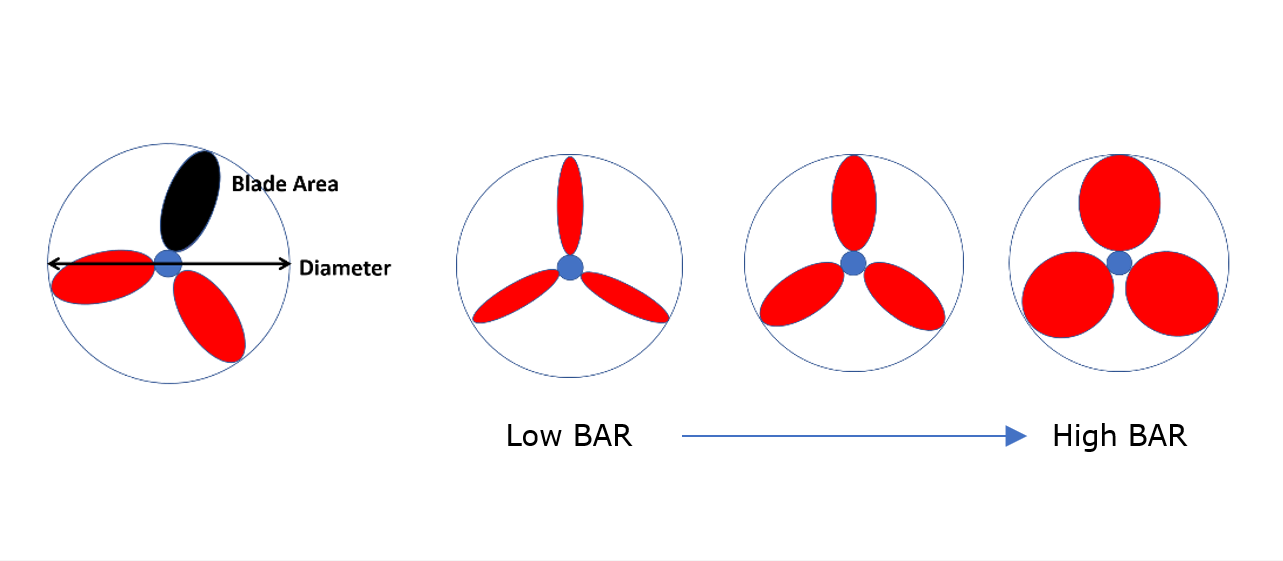Blade Shape and Blade Area Ratio (BAR)
Why is Blade Shape important?
Propeller blades should have an airfoil shape, with the cross-section showing camber and twist, which will generate more lift than flat blades of the same area. A flat blade is not as efficient as a fully shaped blade, with camber, curve and twist.
Why is Blade Area and BAR Important?
Blade area and BAR (blade area ratio) is key to thrust. Large blade surface area (wetted surface) and large BAR will translate to more thrust (power) at any RPM. The boat will accelerate quicker / stop faster and more importantly, punch through waves in a head sea, head wind or against the current far better – maintaining boat speed and not slowing.
 What is BAR?
What is BAR?
BAR represents the relationship between the size of the propeller blade and its diameter; it is equal to the blade area outside of the hub, divided by the total area (πr2) of the disk/circle of the propeller.
A 3-bladed propeller has a greater BAR (blade area ratio) than a 2-blade propeller and therefore develops more thrust (power) at any RPM. The boat will accelerate quicker / stop faster and punch through waves in a head sea, head wind or against the current far better while maintaining boat speed and not slowing. With an engine of 25hp or more, a 2-blade propeller does not have enough blade area to fully use the hp available from the engine and put it out as thrust into the water, it lacks the “grip” in the water. With a 3 blade the installation is smoother, less vibration throughout the RPM curve.
A 4 bladed propeller can be installed if it’s not possible to fit an optimized 3-blade propeller due to Diameter of the prop is restricted by the boat structure, Engine power is too high for a 3 blade prop of the diameter that will fit, Shaft RPM is too high (low gear ratio).
Why is Camber important?
Camber is the asymmetry between the two acting surfaces of an airfoil. The front surface of the propeller blade is more convex (positive camber) causing a difference in the flow around the blade which causes pressure difference for lift.
Why is Twist important?
Twist in the blade is created with a shallower angle at the tip to account for the longer distance travelled by the tip, with each revolution, as compared to the inner blade (closer to the hub). To ensure the propeller produces a constant force (thrust) all along its blade length, the angle of attack needs to be different at different points along the blade – greater near the hub where the blade is moving slowest and shallower near the tips where the blade is moving fastest. The twist transfers torque from engine into thrust in water most efficiently (Since the tips cannot get ahead of the inner blade). A flat shaped propeller blade is not efficient at producing thrust as it is overloaded at the tip and under loaded at the blade base, whereas a fully shaped aerofoil blade shape has a constant loading over its whole surface.